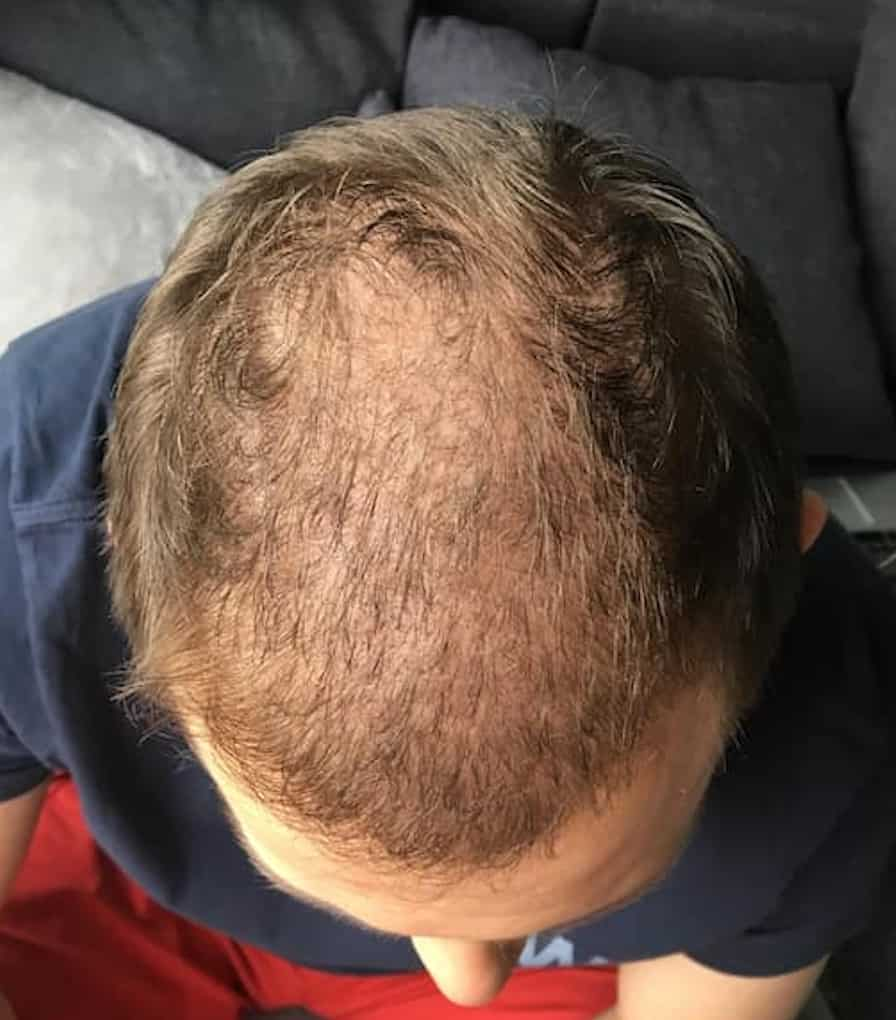A hair transplant after 20 days can become a cause for concern for many people because they start to shed hair from their scalp. Many people take it as a sign of a failed hair transplant, but it’s only a part of the recovery process.
Also, this won’t be the only thing that might happen to you after 20 days. Besides a shock loss, it’s possible for you to experience some other side effects of this surgery.
So, to avoid panicking when the time comes, it’s important that you’re aware of it. And to ensure that you get the best possible results, you should also know what you should (or shouldn’t) do 20-21 days after your surgery.
It’s important to keep in mind, however, that every patient is unique, so not all of you will experience the same thing at the same time. It’s just what usually happens.
What Happens 20 Days After Hair Transplant?
Many people experience shock loss around 20-21 days after a hair transplant.
It’s because of the shock of the surgery itself that hair ends up entering a resting (telogen phase) while leaving the growing (anagen) phase.

The result is the shedding of the transplanted hair, which can make the hair in the bald spots look patchy. However, the donor area can also experience this type of hair loss.
It’s part of the process, so there’s no need to worry about it. This usually resolves on its own in 3-4 months.
Other than that, an FUE hair transplant after 20 days – which is when 20 days have passed following your hair transplant using the FUE technique – may also result in the formation of pimples on your scalp (this can also happen later). It happens because of the new hair growing within your skin, so it’s also normal.
Although if you’re thinking about squeezing them, it’s important that you don’t do it without consulting your surgeon first. They’ll advise you on how to do it without increasing your risk of infection.
You might still have some numbness and redness, but some other side effects, like itching and crusting, should have gone.
What To Do 20 Days After Hair Transplant?
There’s nothing new that you need to do after 20 days of hair transplant. Most importantly, just make sure to continue following the aftercare instructions of your surgeon.
This can include avoiding any heavy exercise so you don’t sweat, increase your blood pressure or get injured. Although light exercises are considered okay.

Other than that, you might be instructed to stay out of direct sunlight and not cover your head with anything tight.
It still might not be okay for you to put any oils on your scalp or even use showerheads when going for a wash.
But what you should do is make sure to keep your head safe and protected while staying patient and eating healthy foods.
Keep in mind that the do’s and don’ts for each patient can be different, so listen to your surgeon for the best results.
Can I Scratch My Head After 20 Days Of Hair Transplant?
In general, patients are advised against scratching their scalp for 14 days after surgery until the hair transplant scabs fall off.
So, after 20 days of hair transplant – which entails the passing of 20 days or sometimes around 3 weeks after a hair transplant surgery – it should be okay for you to scratch your scalp.

If you do it anytime before this, you might dislodge the hair graft(s) on your scalp. And if that happens, no hair will grow there.
But even after 20 days, you shouldn’t dig your nails so much into your skin that it gets damaged and/or starts to bleed. That’s because you’re still in the early stages of recovery after your hair surgery.
Are Grafts Secure After 20 Days?
Newly transplanted grafts can take 10-14 days to take root in the scalp. So, your hair grafts should be secure after 20 days.
But before this, patients are advised to avoid strenuous activities and to not cover their heads before 2 weeks.
Keep in mind that increased blood pressure can cause your hair grafts to die due to damage to the surrounding blood vessels. It can also make the grafts pop out of your scalp because they’re not secure in place.
And also, to prevent them from getting snagged or your scalp all sweaty, you need to avoid caps, hats, wigs, beanies, etc., too, for the first 2 weeks after surgery.
Can I Go To The Gym 20 Days After Hair Transplantation?
A hair transplant surgeon will probably advise you not to go to the gym 20 days after the procedure.

Even though your hair grafts will be secure by then, your skin will still be sensitive, so you should only engage in light exercises.
It should be okay for you to go to the gym after 1 month for exercises like weight lifting, intense cardio, high-intensity interval training, etc. However, your surgeon must still give you the go-ahead first.
Conclusion
20 days after you’ve had your hair transplant, you may still feel nervous, especially once your hair starts to fall out. However, as long as you’re recovering normally, there should be nothing to worry about.
But as you’ll still be in the early stages of the recovery period, it’s important that you’re careful about the health of your scalp (and your overall health as well). For this, you must follow the hair transplant aftercare instructions provided by your surgeon.
And if at any point you feel like something’s wrong, don’t hesitate to get in touch with the aftercare for a consult from your surgeon. Aftercare should be included in the hair transplant cost in Turkey for all patients.



